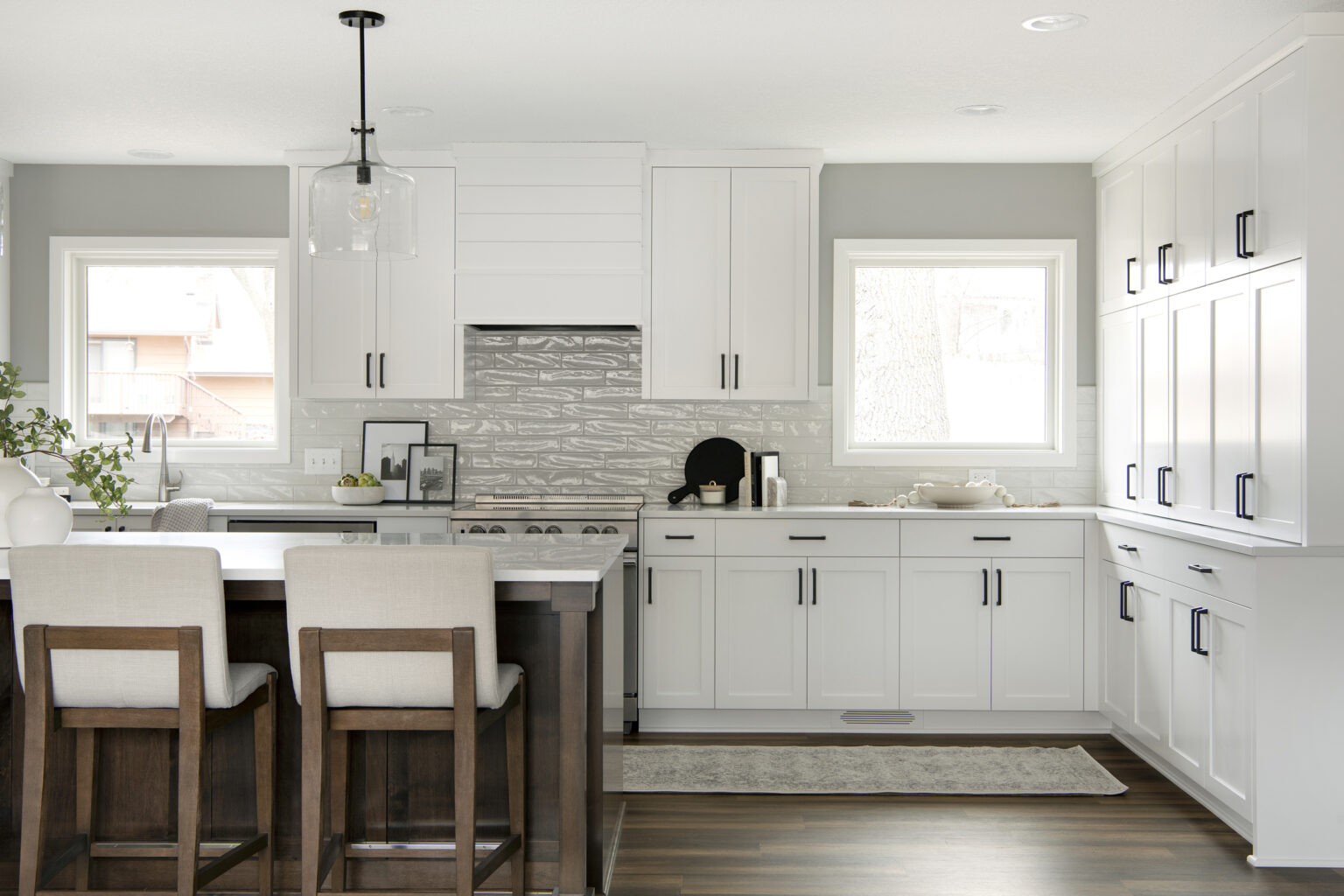Planning every step of your remodeling project is the best way to avoid delays and surprises. However, it’s easier said than done for many homeowners. Permit approvals, design changes, and supply chain issues can all disrupt your flow. While some of these things might be outside your control, developing a schedule and planning ahead can keep even the biggest remodeling projects on track.
Did you know? At James Barton Design-Build, we give you a schedule on day one so you know what to expect. We also avoid supply chain issues by purchasing materials ahead of time. With 30 years of industry expertise, we know how to navigate all the challenges a home renovation can bring. Contact our team for a consultation today!
Aside from keeping your home renovation on budget, keeping things on schedule is one of the most important factors for a successful project. In this article, we’ll explore how to create a remodel schedule step by step so your project gets completed on time.
Step 1: Book a Contractor Early
Remodeling contractors have busy schedules that fill up quickly. If you have an end date in mind, make sure you get on the books well in advance. Depending on the season, contractors sometimes book out months in advance.
Planning a remodel? Contact JBDB for a consultation so we can get started on your project!
Step 2: Ask Your Builder for a Schedule
A good contractor will be more than willing to provide you with a home remodel schedule outlining the work to be done. If your builder is hesitant to give you a schedule, it can be a red flag that they’re unable to stick to one.
“Great experience and outcome working with James Barton and his team! They are a very professional group of people who had great communication through the whole project. The most impressive thing was they gave us a calendar of what was happening on each day and the expected finish, and they did not deviate! Project was finished exactly when they said, and we could not be happier with how it turned out!”
– Matthew S.
Step 3: Find Alternative Spaces to Use During the Remodel
Depending on what area of your home you’re working on, you might need to adjust your life during the remodel. If you don’t plan ahead, this can delay your project. Start by making a plan for:
- Accessing food and snacks. If you’re remodeling your kitchen, make a plan for eating out more often and putting snacks in a different room. Think about where else you can put your coffee maker and other essentials. Bonus Tip: You can stock up on restaurant gift cards from Costco, which sells them at a discount!
- Family gatherings. No matter what area of your home you’re remodeling, it will be more difficult to host during a remodel. Have friends or family take over holiday plans or other get-togethers.
- Pet Safety. If your pets have free range of the home, start getting them accustomed to a new space to minimize stress when the project begins. Check out our guide to pet-friendly remodeling for more tips!
- Sleeping areas. If you’re remodeling a bedroom, think about where you can move your sleeping arrangements ahead of time. If you’re doing an extensive whole-home remodeling project, you may want to budget for extended stay accommodations.
- Entertainment. Remodeling can be stressful, so make sure you still have a cozy place to retreat at the end of the day. If your living room is under construction, set up a family area somewhere else where you can relax.
Step 4: Start Organizing Documents
When remodeling your home, you’ll accumulate a lot of paperwork. Before your project gets underway, make a dedicated folder or binder for storing all your essential documents. This can include receipts, design plans, remodeling contracts, purchase orders, permits, and more.
Having easy access to documents means you won’t have to worry about lost paperwork delaying your project.
Step 5: Design Your Project Carefully
One of the biggest reasons projects get off schedule is last-minute changes. It’s common for homeowners to change their minds midway through a project, but this can derail the schedule significantly.
To keep your remodeling schedule on track, talk through your design choices with your contractor to make sure you love everything before work gets underway.
Step 6: Buy Materials Ahead of Time
Aside from unexpected price changes, material shortages can pose a big problem for your remodeling project. Once you’ve finalized your design, it’s a good idea to purchase the supplies you will need in advance.
Because delivery schedules can vary, make a plan for storing your materials until they’re ready to be used. This might involve cleaning out an area of your home that’s not part of the remodel.
At JBDB, we buy all our materials ahead of time, so your project won’t get delayed with supply chain issues.
Step 7: Be Available for Check-Ins
As construction is underway, your contractor will likely need to communicate with you regularly. Being responsive to their questions will help keep your project on track and ensure everything turns out the way you want it to.
Home Remodeling Schedule FAQs
What is a typical remodel schedule?
The length of a home remodeling schedule depends on what area of the home you’re renovating and the complexity of the project. It also depends on your contractor. Typical remodeling schedules with JBDB are:
- Kitchens: 10-12 weeks
- Bathrooms: 6-8 weeks
- Basements: 8-12 weeks
- Decks: 2-3 weeks
- Screened porches/porch additions: 6-10 weeks
- Home additions: 10+ weeks depending on complexity
How long does it take to get on a contractor’s schedule for a remodel?
The amount of time it takes to start your project will depend on a contractor’s current workload. At JBDB, we usually spend 6-8 weeks designing your project. Projects typically begin 1-2 months after signing the contract.
What can I do if my project falls behind schedule?
If you’re working with a contractor, communicate openly with them about your expectations. Refer to your signed contract for written guarantees on timelines and deadlines. If you’re doing the work yourself, hiring someone to help you might be beneficial for getting back on track. Avoid rushing through tasks to get done on time, as this can lead to poor quality work that needs to be repaired.
How long does it take to get construction permits in MN?
The amount of time it takes to get a building permit will vary depending on your city. Some can process permits in as little as five business days, but others can take up to two weeks.
Do I need to plan for zoning permits?
In Minnesota, you will need to plan for zoning approval if your project involves major changes to the structure of your home or land usage. Decks, accessory structures, fences, and home additions typically need zoning permits.
Plan Ahead with James Barton Design-Build
Remodeling your home is an exciting time, and nobody wants to deal with unexpected delays. At James Barton Design Build, we communicate with homeowners regularly to keep them in the loop on the progress of their project. We also provide them with a schedule of the work to be completed—and stick to it. Schedule a consultation with us to get started today!




